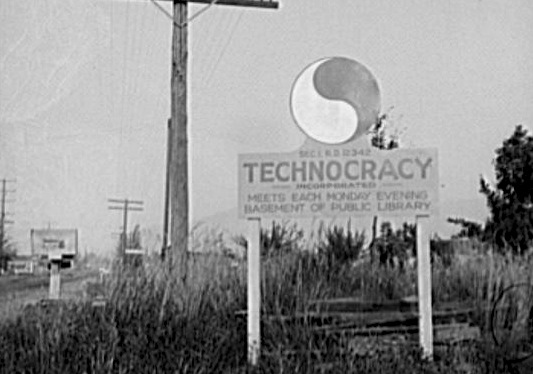Technocracy -- a Depression Panacea
Dan Bryan, September 9 2012

Societies and individuals are prone to many of the same shortfalls, on different scales. One of these is the loss of perspective in the midst of hardship, manifesting itself in a desperate grasp for glib, impractical solutions in the thrall of despair. A random, mostly forgotten, but strangely fascinating movement called Technocracy was an exemplar of this in 1932.
In February of 1932, Technocracy was unknown to more than a few eccentric theorists. By August it was on the front pages of the New York Times. By February of 1933 the entire movement was disgraced and in retreat.
Scientific management of the economy
Howard Scott was the undisputed leader of this group. He called for a new political order in which engineers and scientists made important production and economic decisions. He used the Great Depression as evidence that the traditional norms had failed, and in those times he found a willing audience.
"I'm afraid, every man is afraid... We don't know whether the values we have are going to be real next month or not." the steel magnate Charles Schwab said in 1932. Theories and ideas flourished. Astrology and communism, "work share" and barter systems, there was no idea so exotic that it couldn't find adherents in some quarter.
The formulas and theories used by this group were hard to understand. Some critics said that they were meaningless and intentionally abstruse. For at least a few months, this view was in the minority. Many other people agreed wholeheartedly that the current system was a failure. Was unemployment not hovering at 25 percent? Had the Army not just cleared its own veterans out of Washington during the bonus march?
Howard Scott, on the other hand, exuded confidence and had once been a successful engineer. His predictions of an impending collapse to the "price system" were entirely plausible. His efforts to bring about "the synthetic integration of functional sequences of social phenomena" at least stirred people's imaginations in a positive direction.
 Howard Scott, the leader of the Technocracy movement (photo from Technocracy Inc.)
Howard Scott, the leader of the Technocracy movement (photo from Technocracy Inc.)Throughout the fall of 1932, this unknown man was suddenly a guest of honor at many of the finest places in New York. Nationally he became a minor celebrity.
The downfall of Technocracy
It did not last long.
A combination of internal dissension and the natural fading of Scott's popularity within the general public led him to make a nationally broadcasted radio address in January 1933. By all accounts the speech was disjointed and rambling, and triggered a collapse in public esteem for the Technocrats. Scott's reputation was further damaged when it emerged that he had not been an engineer at all, as he claimed, but rather a wax salesman.
It its own way the rise of this group paralleled the rise of fascism in more eccentric form. At its heart, Technocracy purveyed the idea that the old order had failed, that a new scientific elite must take command, and that bedrock economic principles must be overturned.
The story of Technocracy had a benign conclusion, but it would be a mistake to look at such groups as mere historical curiosities. The success of Technocracy, however brief, said more about the desperate state of America in 1932 than it ever did about the group itself.
Recommendations/Sources
- The Economist - Minds like machines
- There is a small remnant of the Technocracy movement that operates still. Their research library can be viewed here.
- Frederick Lewis Allen - Since Yesterday: The 1930's in America, September 3, 1929 to September 3, 1939
